I am trying install a windows USB driver with a simple structure (containing only the following content -
- app.inf,
- app.cat
- WdfCoInstaller01005.dll
- WinUSBCoInstaller.dll
). The driver is sha 256 signed using a valid standard kernel mode code signing certificate issued by Digicert. I could see the digital signature in the app.cat file when I am see the properties of the file. I am trying to install the driver via install-shield setup in the Windows 7 SP1 64 Bit machine with all latest updates installed( including KB3033929). It still shows the warning Windows cant verify the publisher of this driver software.
For troubleshooting this I have tried installing the certificate in the target machine as one of the Stackoverflow link suggests. Still no hope.
I have used the following commands during the process of generating the .cat file and signing the .cat file. (There is no .sys file)
Inf2Cat /driver:"C:\CodeSigning" /os:7_X64,7_X86
C:\Program Files (x86)\Windows Kits\10\bin\10.0.15063.0\x64>signtool.exe si
gn /v /ac "C:\CodeSigning\DigiCert High Assurance EV Root CA.crt" /a /t ht
tp://timestamp.digicert.com "C:\CodeSigning\Driver\app.cat"
EDIT Adding more information.
I have tried Sha256 Signing also (Referring from https://www.digicert.com/code-signing/driver-signing-in-windows-using-signtool.htm (section :Internet Explorer or Chrome for Windows)
signtool sign /v /ac "C:\path\DigiCert High Assurance EV Root CA.crt" /a /tr http://timestamp.digicert.com /td sha256 /fd sha256 "c:\path\to\FileToSign.cat"
Still I am getting the same error.
EDIT 2- Adding the source of the Inf file
Please refer the source of the .inf file below (Could be little legacy).
[Version]
Signature = "$Windows NT$"
Class =XYZdevice
ClassGuid={ad769fbf-c592-4b8c-940a-6e3782a545e8}
Provider = %ProviderName%
DriverVer=10/13/2017,6.00.2064
CatalogFile=%MFGFILENAME%.cat
; ========== Manufacturer/Models sections ===========
[Manufacturer]
%ProviderName% = XYZInc,NTx86,NTamd64
[XYZInc.NTx86]
%USB\MyDevice.DeviceDesc% =USB_Install, USB\VID_1448&PID_4AC0&REV_0001
[XYZInc.NTamd64]
%USB\MyDevice.DeviceDesc% =USB_Install, USB\VID_1448&PID_4AC0&REV_0001
; =================== Installation ===================
[ClassInstall32]
AddReg=SampleClass_RegistryAdd
[SampleClass_RegistryAdd]
HKR,,,,%ClassName%
;[1]
[USB_Install]
Include=winusb.inf
Needs=WINUSB.NT
;[2]
[USB_Install.Services]
Include=winusb.inf
AddService=WinUSB,0x00000002,WinUSB_ServiceInstall
;[3]
[WinUSB_ServiceInstall]
DisplayName = %WinUSB_SvcDesc%
ServiceType = 1
StartType = 3
ErrorControl = 1
ServiceBinary = %12%\WinUSB.sys
;[4]
[USB_Install.Wdf]
KmdfService=WINUSB, WinUsb_Install
[WinUSB_Install]
KmdfLibraryVersion=1.5
;[5]
[USB_Install.HW]
AddReg=Dev_AddReg
[Dev_AddReg]
HKR,,DeviceInterfaceGUIDs,0x10000,"{15630179-b622-4834-8ff7-9916b1446884}"
;[6]
[USB_Install.CoInstallers]
AddReg=CoInstallers_AddReg
CopyFiles=CoInstallers_CopyFiles
[CoInstallers_AddReg]
HKR,,CoInstallers32,0x00010000,"WdfCoInstaller01005.dll,WdfCoInstaller","WinUSBCoInstaller.dll"
[CoInstallers_CopyFiles]
WinUSBCoInstaller.dll
WdfCoInstaller01005.dll
[DestinationDirs]
CoInstallers_CopyFiles=11
; ================= Source Media Section =====================
;[7]
[SourceDisksNames]
1 = %DISK_NAME%,,,\i386
2 = %DISK_NAME%,,,\amd64
[SourceDisksFiles.x86]
WinUSBCoInstaller.dll=1
WdfCoInstaller01005.dll=1
[SourceDisksFiles.NTamd64]
WinUSBCoInstaller.dll=2
WdfCoInstaller01005.dll=2
; =================== Strings ===================
[Strings]
MFGFILENAME="XYZDevice"
ProviderName="XYZ Inc"
ClassName="XYZ device"
USB\MyDevice.DeviceDesc="XYZ"
WinUSB_SvcDesc="XYZ"
DISK_NAME="Drivers"
I have verified the counter signature details also. Please refer the image below.
- Thumbprint of the certificate used for cross signing (thumbprint: 2f 25 13 af 39 92 db 0a 3f 79 70 9f f8 14 3b 3f 7b d2 d1 43 cross-certificate for DigiCert High Assurance EV Root CA)
- Thumbprint of the cross signed certificate which can be seen from the properties of the signed file is 40 01 91 47 5c 98 89 1d eb a1 04 af 47 09 1b 5e b6 d4 cb cb (I dont know whether it is correct or not)
Please help. I have spent plenty of time on this and still end up with no results. Any help on this would be really appreciable.


